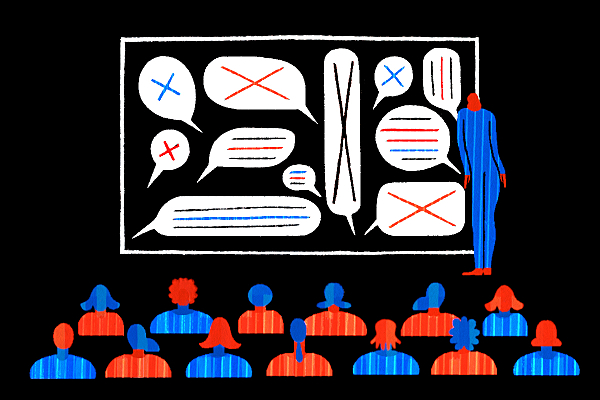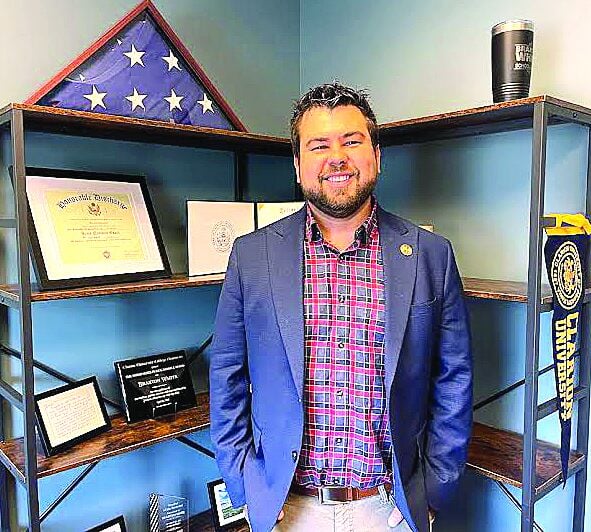Report on the Supreme Court Ruling in Mahmoud v. Taylor and its Implications for Sustainable Development Goals
A recent Supreme Court decision in the case of Mahmoud v. Taylor has granted parents in Montgomery County, Maryland, the right to opt their children out of school lessons and books featuring LGBTQIA+ characters on the basis of religious objections. This ruling presents significant challenges to the principles of inclusive education and has direct implications for the achievement of several United Nations Sustainable Development Goals (SDGs), notably SDG 4 (Quality Education), SDG 10 (Reduced Inequalities), and SDG 16 (Peace, Justice, and Strong Institutions).
Impact on Quality Education (SDG 4)
The court’s decision directly impacts the delivery of quality, inclusive, and equitable education as outlined in SDG 4. The core of the debate centers on the nature of the curriculum and its role in fostering a supportive learning environment for all students.
The Value of an Inclusive Curriculum
An inclusive curriculum is identified as a cornerstone of a quality education that promotes global citizenship and appreciation for cultural diversity (SDG Target 4.7). Perspectives from a Montgomery County Public Schools (MCPS) student and a legal advocate highlight its benefits:
- It ensures students feel included, accepted, and seen, which is critical for a healthy learning environment.
- It reflects the diversity of the student body and society, making students from various backgrounds feel more comfortable and understood at school.
- It provides a more engaging and globally-oriented education by exposing students to a wide variety of people, cultures, and experiences.
- It encourages students to develop critical thinking skills by learning “how to think, not what to think,” allowing them to form their own conclusions about the diverse world they inhabit.
Threats to Educational Integrity and Equity
The ruling is seen as a potential threat to the integrity of evidence-based education and the principle of equitable access for all.
- Erosion of Professional Standards: The decision may allow a small group of parents to influence curriculum development, overriding the expertise of educators who create comprehensive and evidence-based educational programs.
- Administrative Burden: Schools and teachers face a significant burden in managing opt-out requests and creating alternative lesson plans, diverting resources from core educational duties.
- Precedent for Broader Censorship: Concerns were raised that the ruling could empower extremist groups and set a precedent for parents to demand opt-outs from other established subjects, such as evolution, the history of slavery, or the Civil War, thereby fragmenting the educational experience.
Implications for Social Equity and Justice (SDG 10 & SDG 16)
The decision extends beyond the classroom, touching on fundamental principles of equality, non-discrimination, and the function of legal institutions.
Undermining Efforts to Reduce Inequalities (SDG 10)
The ruling is viewed as a setback for SDG 10, which aims to reduce inequality within and among countries by empowering and promoting the social inclusion of all, irrespective of status (Target 10.2).
- The decision to permit opt-outs from content featuring LGBTQIA+ individuals is seen as marginalizing a specific community, suggesting their existence is an objectionable topic rather than a part of human diversity.
- This action risks alienating LGBTQIA+ students and families, undermining the sense of community and belonging that is crucial for social cohesion, particularly in a region noted for its ethnic and religious diversity.
- It introduces divisiveness into the community, contradicting the goal of fostering inclusive societies.
Challenges to Justice and Strong Institutions (SDG 16)
The legal basis of the ruling raises questions related to SDG 16, which focuses on promoting just, peaceful, and inclusive societies with effective and accountable institutions.
- Legal Precedent: The decision is noted as a departure from the legal principle of stare decisis (following precedent), as previous Free Exercise Clause cases typically involved government compelling an individual to violate their religious beliefs, not mere exposure to ideas.
- Expansion of the Free Exercise Clause: Legal analysis suggests the Court expanded the interpretation of the clause to limit inclusivity in education, a move Justice Sotomayor’s dissent argued was inconsistent with established jurisprudence.
- Student Powerlessness: The ruling is expected to make students feel more helpless regarding their own education, which could be detrimental to their learning and engagement.
Conclusion: The Path Forward for Inclusive Education
While the Supreme Court’s decision in Mahmoud v. Taylor creates significant challenges, it does not prohibit schools from providing LGBTQIA+-inclusive curricula. Advocacy from students, parents, and community members is identified as crucial to ensure that educational institutions continue to provide affirming environments where all students feel seen and valued. Upholding inclusive educational practices is essential for making progress on the Sustainable Development Goals and ensuring that education serves as a tool for fostering equality, justice, and a cohesive global society.
Which SDGs are addressed or connected to the issues highlighted in the article?
-
SDG 4: Quality Education
The article is centered on the quality and content of education, specifically the importance of an inclusive curriculum. It discusses how the Supreme Court’s decision impacts the learning environment, the content of lessons, and the overall goal of providing an affirming and comprehensive education for all students.
-
SDG 5: Gender Equality
The core issue of the article is the exclusion of books and lessons featuring LGBTQIA+ characters. This directly relates to gender equality by addressing discrimination based on sexual orientation and gender identity. The goal of ensuring all students, including LGBTQIA+ individuals, feel “seen, safe, and valued” is a key aspect of promoting gender equality in all spheres of life, including education.
-
SDG 10: Reduced Inequalities
The article highlights how the court’s decision can create and exacerbate inequalities. It discusses the risk of “alienating Queer people” and creating divisions. By allowing certain students to be opted out of inclusive curricula, it creates an unequal educational experience and undermines the principle of equal opportunity for all students to learn in a supportive environment, irrespective of their identity or background.
-
SDG 16: Peace, Justice and Strong Institutions
The article critiques a decision by a key judicial institution, the Supreme Court. It questions the legal basis of the ruling, noting that “SCOTUS didn’t follow their principle of stare decisis” and that the decision could “introduce more divisiveness into our society.” It addresses the need for just, non-discriminatory policies and inclusive decision-making processes within legal and educational systems.
What specific targets under those SDGs can be identified based on the article’s content?
-
SDG 4: Quality Education
- Target 4.7: Ensure all learners acquire knowledge and skills needed for sustainable development, including human rights, gender equality, and appreciation of cultural diversity. The article supports this target by advocating for a curriculum that exposes students to “all kinds of different people, cultures, and practices.” Ayah, the student, states that a diverse curriculum “gives students a more global education” and helps them understand different identities, which is crucial for promoting human rights and cultural appreciation.
- Target 4.a: Build and upgrade education facilities to provide safe, non-violent, inclusive, and effective learning environments for all. The article repeatedly emphasizes the need for a “healthy and supportive learning environment” where students feel “included and accepted and seen.” The ruling is seen as a threat to this safety and inclusivity, making this target highly relevant.
-
SDG 5: Gender Equality
- Target 5.1: End all forms of discrimination. The article’s focus on challenging the exclusion of LGBTQIA+ representation in school curricula is a direct effort to combat discrimination based on sexual orientation and gender identity within the education system.
-
SDG 10: Reduced Inequalities
- Target 10.2: Empower and promote the social inclusion of all, irrespective of status. The article advocates for the social inclusion of LGBTQIA+ students by ensuring their lives and families are represented in the curriculum. Ayah notes that seeing herself reflected in stories “makes me feel more comfortable at school,” which is a key component of social inclusion.
- Target 10.3: Ensure equal opportunity and reduce inequalities of outcome, including by eliminating discriminatory policies. The Supreme Court’s decision is presented as a policy that creates inequality. The article calls for a fight against such policies to ensure all students have an equal opportunity to receive an inclusive education.
-
SDG 16: Peace, Justice and Strong Institutions
- Target 16.7: Ensure responsive, inclusive, and representative decision-making. The article critiques the Supreme Court’s decision for allowing a “small group of parents to influence children’s education,” which undermines a representative and inclusive approach to curriculum development. The call for advocacy from “students, parents, and local community members” supports a more participatory decision-making process.
- Target 16.b: Promote and enforce non-discriminatory laws and policies. The article implicitly advocates for this target by criticizing the court’s ruling as discriminatory and harmful. Shiwali Patel argues the court “expanded the clause solely to limit inclusivity in education,” positioning the ruling as a discriminatory policy that needs to be countered.
Are there any indicators mentioned or implied in the article that can be used to measure progress towards the identified targets?
-
For SDG 4 (Quality Education)
- Indicator (Implied): The content and diversity of the school curriculum. Progress can be measured by the presence of “books that feature LGBTQIA+ characters,” stories with “characters of different backgrounds,” and the inclusion of diverse cultures, as mentioned by Ayah.
- Indicator (Implied): Student-reported feelings of safety and inclusion. Ayah’s testimony that a diverse curriculum makes students feel “included and accepted and seen” serves as a qualitative indicator for a safe and effective learning environment (Target 4.a).
-
For SDG 10 (Reduced Inequalities)
- Indicator (Implied): The number and scope of opt-out policies and requests. The article suggests tracking the impact of the ruling by monitoring how many parents submit “burdensome opt-out requests” and whether these requests expand to other subjects like “evolution, slavery, or the context and outcomes of the Civil War.” A decrease in such requests would indicate progress.
-
For SDG 16 (Peace, Justice and Strong Institutions)
- Indicator (Implied): The existence of laws, policies, and judicial rulings related to curriculum content. The *Mahmoud v. Taylor* ruling itself is a negative indicator. Future court decisions or school board policies that protect inclusive curricula would be positive indicators of progress toward non-discriminatory policies (Target 16.b).
- Indicator (Implied): The level of community and student advocacy against censorship. The article concludes with a call to action, implying that the level of engagement from “students, parents, and local community members” in fighting censorship is a measure of progress towards participatory decision-making (Target 16.7).
SDGs, Targets, and Indicators Analysis
| SDGs | Targets | Indicators (Mentioned or Implied in the Article) |
|---|---|---|
| SDG 4: Quality Education |
4.7: Ensure learners acquire knowledge for sustainable development, human rights, gender equality, and cultural diversity.
4.a: Provide safe, inclusive, and effective learning environments. |
– Extent to which curriculum includes a “variety of stories with characters of different backgrounds,” including LGBTQIA+ representation. – Students’ self-reported feelings of being “included,” “accepted,” “seen,” and “safe” at school. |
| SDG 5: Gender Equality | 5.1: End all forms of discrimination. | – The presence or absence of policies that allow for the exclusion of LGBTQIA+ content, which is a form of discrimination. |
| SDG 10: Reduced Inequalities |
10.2: Promote the social inclusion of all.
10.3: Ensure equal opportunity and eliminate discriminatory policies. |
– The existence and implementation of policies allowing opt-outs from inclusive curricula. – The number and nature of “burdensome opt-out requests” from parents seeking to censor educational content. |
| SDG 16: Peace, Justice and Strong Institutions |
16.7: Ensure responsive, inclusive, and representative decision-making.
16.b: Promote and enforce non-discriminatory laws and policies. |
– The presence of judicial rulings (like Mahmoud v. Taylor) that are perceived as discriminatory. – The level of advocacy and mobilization from “students, parents, and local community members” to “fight back against censorship.” |
Source: nwlc.org







